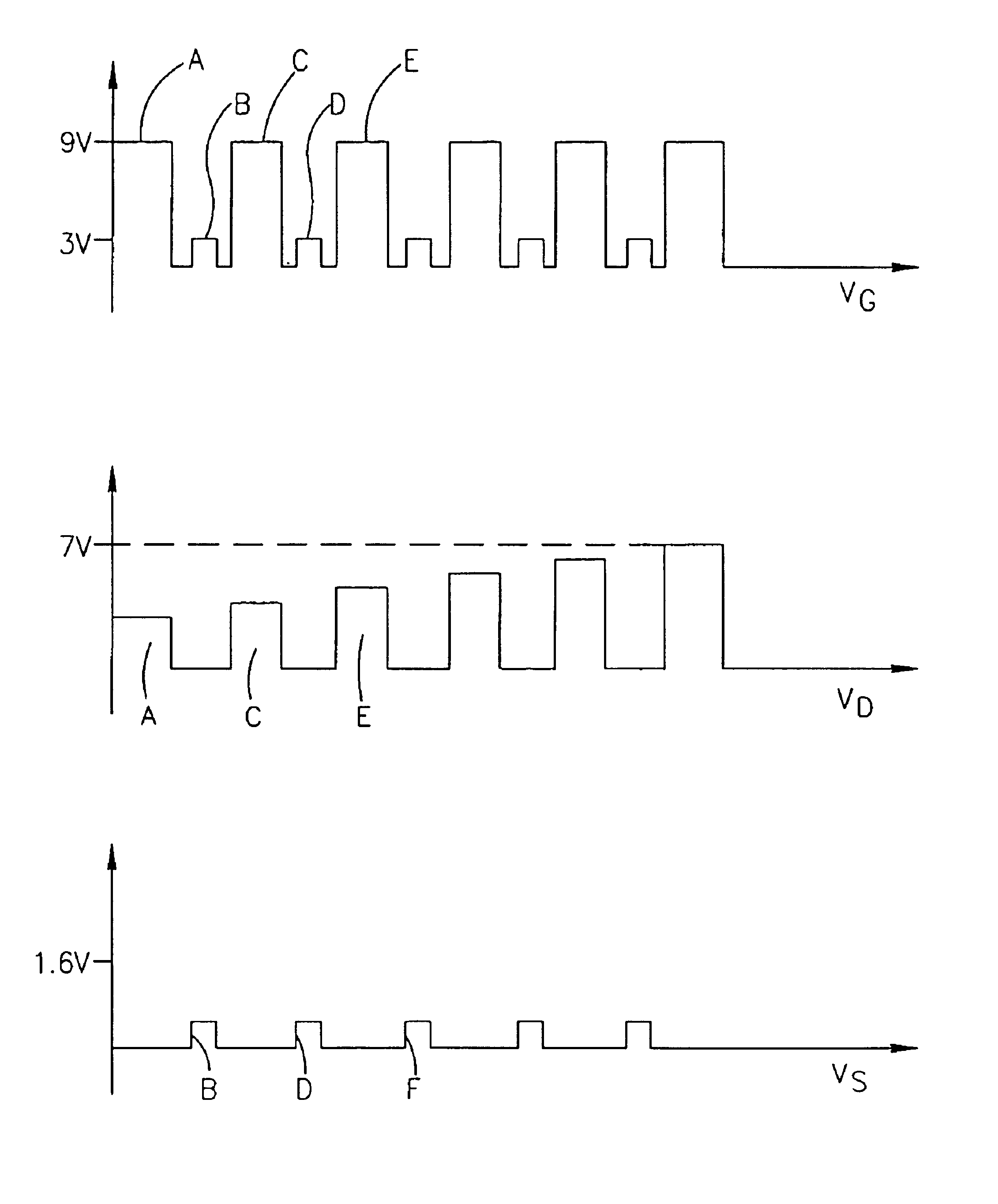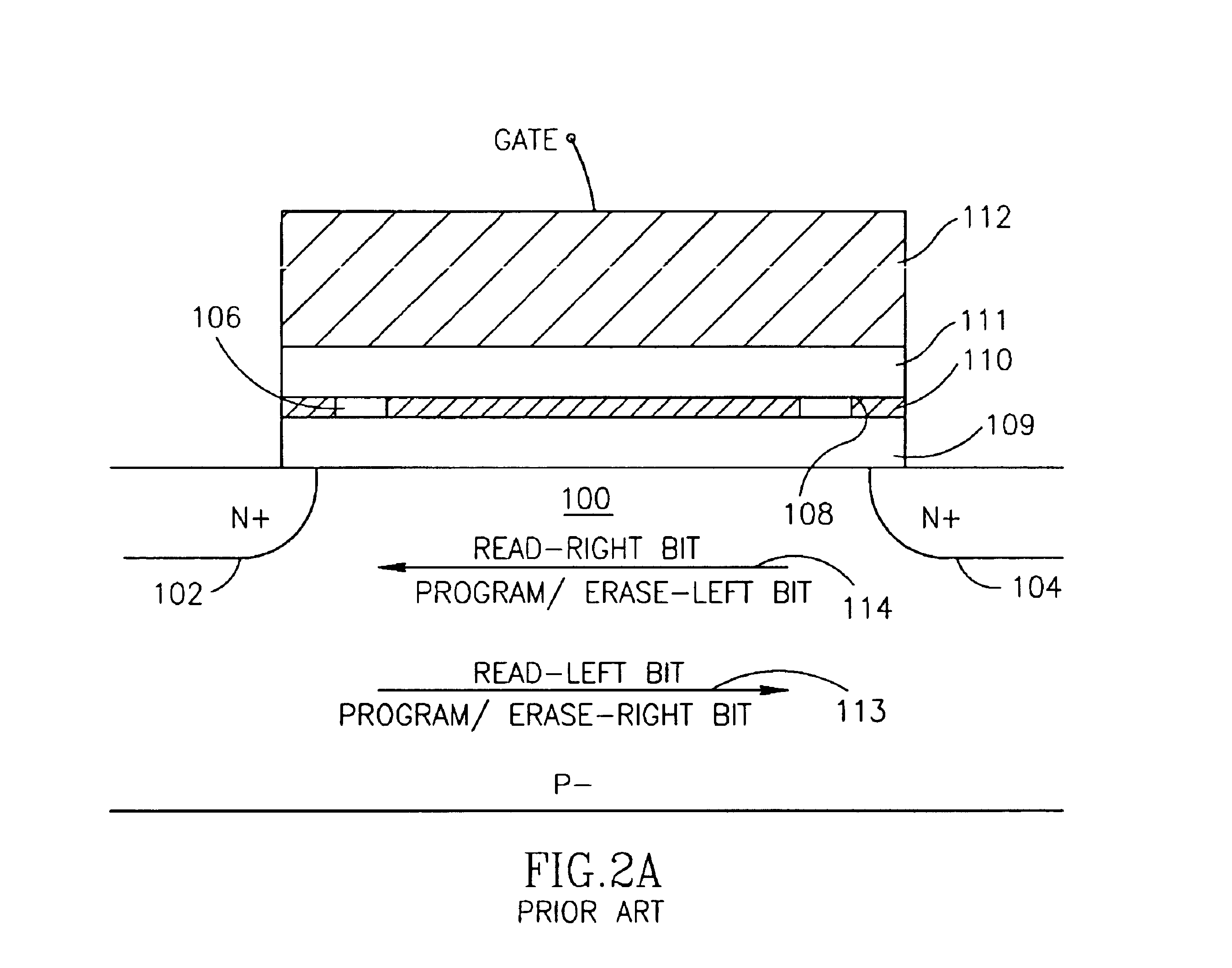Programming and erasing methods for a non-volatile memory cell
a non-volatile, memory cell technology, applied in the direction of digital storage, instruments, transistors, etc., can solve the problems of cell failure to program verification, strategy not meeting the second requirement, wide variation of programming speed,
- Summary
- Abstract
- Description
- Claims
- Application Information
AI Technical Summary
Benefits of technology
Problems solved by technology
Method used
Image
Examples
Embodiment Construction
[0075]The present invention teaches an NROM cell algorithm which regulates the bit line voltage VBL provided to the bit line acting as the drain, thereby providing tight programming control. Furthermore, the described invention provides the combination of a fast programming algorithm with reduced over-programming risk, and hence improved product endurance and cycling ability.
[0076]Although a bit line can act as either a source or a drain, in the present application, references to the bit line voltage VBL refer to the voltage produced to the situations when the bit line currently acting as a drain. For purposes of clarity herein, when the bit line acts as a source, it is herein referred to as a source.
[0077]The present invention further teaches the use of a low programming bit line voltage VBL to produce a tight spatial distribution of trapped charge, thereby resulting in better two-bit separation in the NROM cell, faster erase, and increased product life.
[0078]Furthermore, by contro...
PUM
 Login to View More
Login to View More Abstract
Description
Claims
Application Information
 Login to View More
Login to View More - R&D
- Intellectual Property
- Life Sciences
- Materials
- Tech Scout
- Unparalleled Data Quality
- Higher Quality Content
- 60% Fewer Hallucinations
Browse by: Latest US Patents, China's latest patents, Technical Efficacy Thesaurus, Application Domain, Technology Topic, Popular Technical Reports.
© 2025 PatSnap. All rights reserved.Legal|Privacy policy|Modern Slavery Act Transparency Statement|Sitemap|About US| Contact US: help@patsnap.com



